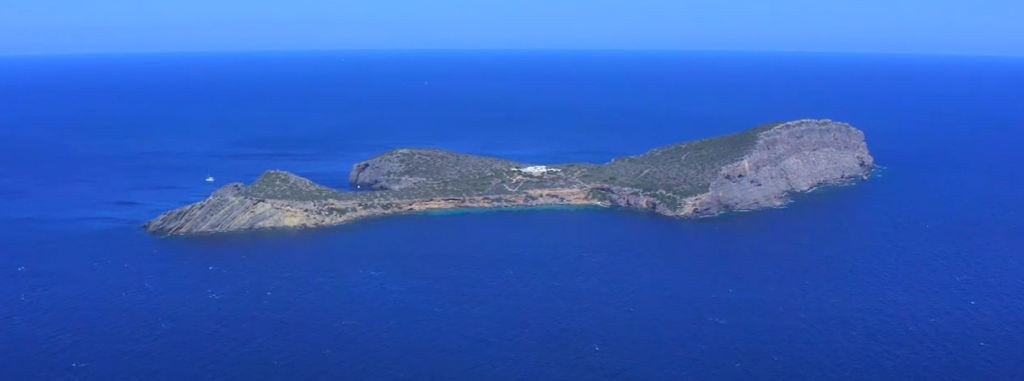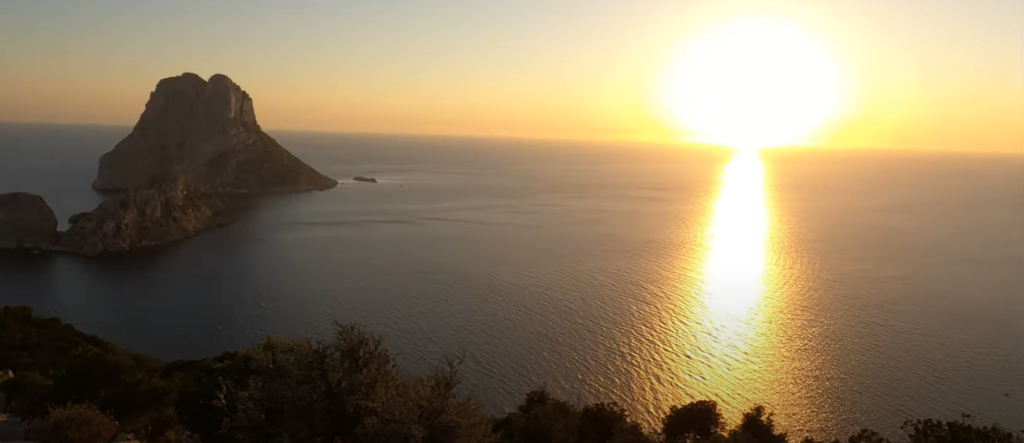Forget everything you think you know about Ibiza. Yes, it’s the undisputed clubbing capital of Europe, but beneath those legendary party waters lies an underwater realm that’s equally intoxicating. Diving in Ibiza reveals a completely different side to this Balearic beauty – one where ancient Posidonia seagrass meadows stretch like underwater prairies, where groupers the size of small cars patrol dramatic drop-offs, and where crystal-clear Mediterranean waters offer visibility that makes your dive computer seem redundant.
I’ve been fortunate enough to explore these waters during both the height of summer madness and the serene winter months, and I can tell you with absolute certainty that Ibiza’s underwater world is every bit as captivating as its legendary nightlife – just considerably more peaceful and infinitely more beautiful.
Optimal Diving Seasons: Timing Your Underwater Adventure
The Mediterranean climate blessing Ibiza creates diving opportunities throughout the year, though each season brings distinctly different underwater experiences and topside atmospheres.
Late Spring to Early Summer (May to June) represents diving nirvana in Ibiza. Water temperatures climb from a refreshing 20°C to a comfortable 23°C, whilst visibility often exceeds 40 metres – conditions that underwater photographers dream about. The island hasn’t yet descended into summer chaos, meaning you’ll find accommodation at reasonable prices and dive sites blissfully uncrowded. This period also coincides with increased marine activity as species prepare for breeding season.
High Summer (July to August) brings water temperatures to their annual peak of 26-28°C, making these the most comfortable months for extended diving sessions. However, this comfort comes at a price – both literally and figuratively. Accommodation costs skyrocket, dive sites become crowded, and the island transforms into a heaving mass of sun-seekers and party-goers. If you’re planning a summer visit, book dive trips for early morning to avoid the afternoon crowds.
Early Autumn (September to October) might just be Ibiza’s best-kept diving secret. Water temperatures remain deliciously warm at 24-26°C, the summer hordes begin their exodus, and marine life becomes more active after the relative quiet of peak summer. Visibility improves as boat traffic decreases, and you’ll often have entire dive sites to yourself by late September.
Winter (November to March) requires more substantial thermal protection – a 5mm wetsuit minimum – but rewards intrepid divers with exceptional underwater conditions. Water temperatures hover around 16-19°C, visibility can exceed 50 metres, and you’ll witness the Mediterranean at its most pristine. Plus, you’ll experience Ibiza as locals know it: peaceful, authentic, and utterly charming.
Premier Underwater Destinations
Ibiza’s coastline presents a diverse collection of dive sites, each offering unique underwater landscapes shaped by millennia of Mediterranean geology and marine evolution.
Es Vedrà stands as Ibiza’s most iconic dive site, though reaching it requires careful planning due to its exposure to prevailing winds. This mystical rocky outcrop, steeped in local legend, plunges dramatically into the Mediterranean, creating walls that disappear into the blue. Large groupers, barracuda, and even the occasional tuna patrol these depths, whilst the wall itself teems with colourful sponges and soft corals. The site’s reputation for spiritual energy isn’t just New Age nonsense – there’s something genuinely otherworldly about diving here.

The Don Pedro Wreck offers Ibiza’s premier artificial reef experience. This 142-metre cargo ship, deliberately sunk in 2007, now rests in 55 metres of water off the southern coast. Advanced divers can explore the vessel’s superstructure, which has become a haven for marine life including moray eels, nudibranchs, and schools of sea bream. The wreck’s position creates upwellings that attract pelagic species, making each dive an adventure in marine discovery.

Tagomago Island, a small islet off Ibiza’s northeastern coast, provides some of the island’s most pristine diving. The protected waters here harbour extensive Posidonia meadows – UNESCO World Heritage underwater forests that support incredible biodiversity. Octopi, cuttlefish, and seahorses call these meadows home, whilst the rocky areas provide shelter for groupers, dentex, and the occasional ray.

Isla Espalmador, technically part of Formentera but easily accessed from Ibiza, offers diving in one of the Mediterranean’s most pristine marine environments. The crystal-clear waters here regularly offer 50+ metre visibility, revealing underwater landscapes of white sand channels cutting between rocky reefs. This is macro photography heaven, with nudibranchs, crabs, and juvenile fish species thriving in the protected environment.

For cave diving enthusiasts, Cala d’Hort provides access to a network of underwater caverns and swim-throughs that would challenge even experienced divers. The interplay of light filtering through submerged openings creates cathedral-like spaces that feel almost spiritual underwater.
Journey to the Island: Getting There in Style
Ibiza Airport (IBZ) connects directly with major UK cities throughout the diving season, with flight times averaging just 2.5 hours – perfect for maximising your underwater time. During peak season, multiple daily flights from London, Manchester, and Birmingham make spontaneous diving weekends entirely feasible.
Budget airlines dominate the route, with Ryanair, easyJet, and Jet2 offering competitive prices, particularly for early morning or late evening departures. However, I’ve found that paying slightly more for a scheduled carrier often proves worthwhile, especially when travelling with diving equipment – their baggage policies tend to be more generous and customer service more responsive when dealing with gear-related issues.
Ferry services from mainland Spain provide an alternative route that many divers overlook. The overnight ferry from Barcelona or Valencia offers a civilised journey that arrives fresh and ready for diving, whilst avoiding airport baggage restrictions entirely. These ferries often prove more economical for groups or extended stays.
Once on the island, rental cars provide maximum flexibility for accessing various dive sites, though many operators offer comprehensive pickup services. The island’s compact size means nowhere is more than 45 minutes from anywhere else – a blessing when you’re hauling dive gear around.
Dive Operations and Professional Services
Ibiza’s diving industry has matured considerably over recent decades, moving well beyond the basic operations that once sufficed for holiday divers. Today’s dive centres offer professional services that rival anywhere in the Mediterranean.
Ibiza Diving Centre in Sant Antoni has earned recognition for their small group approach and focus on underwater photography workshops. Their guides possess encyclopaedic knowledge of local marine life and consistently locate species that other operators miss.
Sub Aqua Diving Centre near Playa d’en Bossa specialises in technical diving and wreck penetration courses, whilst maintaining beginner-friendly programmes that have introduced thousands to underwater exploration.
Equipment rental standards are generally excellent, though I always recommend bringing personal masks and fins for comfort and hygiene. Most centres offer modern gear from reputable manufacturers, and their compressor systems meet international safety standards.
Surface Attractions: Beyond the Underwater Realm
When not exploring the depths, Ibiza reveals layers of history, culture, and natural beauty that extend far beyond its party reputation.
Dalt Vila, Ibiza Town’s UNESCO World Heritage old quarter, deserves at least half a day’s exploration. These ancient fortified walls contain centuries of Mediterranean history, from Phoenician foundations through Roman occupation to modern Balearic culture. The sunset views from the cathedral ramparts provide perfect contemplation after a day’s diving.
Sant Antoni’s Sunset Strip might seem touristy, but there’s genuine magic in watching the Mediterranean sun disappear behind Es Vedrà whilst sipping local wine and reflecting on the day’s underwater adventures. The Café del Mar phenomenon began here, and despite commercialisation, sunset watching remains a profound experience.

Es Canar Hippy Market every Wednesday offers authentic Ibicenco culture alongside tourist trinkets. Local artisans sell handcrafted jewellery, leather goods, and textiles that make perfect diving trip mementos.
For active surface intervals, hiking trails throughout the island provide stunning coastal viewpoints and insight into traditional Ibicenco life. The path from Cala d’Hort to Torre des Savinar offers spectacular views of Es Vedrà whilst working off those post-dive tapas.

Formentera day trips combine perfectly with diving holidays. This neighbouring island, accessible by short ferry rides, offers pristine beaches and cycling paths through landscapes that haven’t changed in decades.
Practical Diving Considerations
Mediterranean conditions in Ibiza generally favour comfortable diving, with water temperatures ranging from 16°C in winter to 28°C in summer. A 3mm wetsuit suffices for summer diving, whilst winter conditions require 5mm protection minimum.
Visibility varies seasonally from 25-50+ metres, with winter generally offering the clearest conditions. The Mediterranean’s low tidal range creates stable diving conditions, though wind exposure can affect site accessibility.

Current is rarely problematic except at exposed sites like Es Vedrà, where tidal streams can create challenging conditions for inexperienced divers. Always dive with local operators who understand current patterns and weather windows.
Marine life follows Mediterranean patterns, with species diversity peaking during autumn months when water temperatures remain warm but nutrient levels increase due to seasonal mixing.
Concluding Thoughts
Ibiza’s underwater realm offers surprises that complement rather than compete with its famous surface attractions. Whether you’re seeking technical challenges, marine life encounters, or simply peaceful underwater meditation, these Mediterranean waters provide experiences that will fundamentally change your perception of the White Isle.
The island’s diving infrastructure supports every level of underwater exploration, from nervous beginners to technical deep-water specialists. Combined with excellent surface attractions, reliable transport links, and year-round diving opportunities, Ibiza presents compelling arguments for inclusion on any serious diver’s bucket list.
After dozens of dives around these waters, I’m convinced that Ibiza’s greatest treasures lie not in its legendary clubs, but in the silent blue spaces where groupers cruise ancient walls and Posidonia meadows sway in eternal Mediterranean rhythms.
But heck, you can do both, diving one day and clubbing the night after. The best of both worlds, while you’re fit and able enough to manage both!



